Gender and rural transformation: A systematic literature review
Maria Fay ROLA-RUBZEN, Hue T.VUONG , Claire DOLL Curtis ROLLINS Jon Marx SARMIENTOMohammad Jahangir ALAM, Ismat Ara BEGUM
1 UWA School of Agriculture and Environment, The University of Western Australia, Perth, WA 6009, Australia
2 Centre of Science and Technology Research and Development, Thuongmai University, Hanoi 100000, Vietnam
3 Department of Agribusiness and Marketing, Bangladesh Agricultural University, Mymensingh-2202, Bangladesh
Abstract Rural transformation can improve poverty reduction, living standards, and health outcomes in developing countries.However, impacts associated with rural transformation vary by region, household, and individual trait (including gender).While research on rural transformation has been increasing over the last decade, there has been no comprehensive review conducted on the relationships between gender and rural transformation.Here, we conduct a systematic literature review to investigate the impacts of rural transformation on gender and the influence of gender inclusiveness on rural transformation.We reviewed 82 studies from 1960-2021 that explore the relationships between rural transformation and gender.We then developed a framework that captures incidences and flow directions between indicators.Results show that most studies examined the impacts of rural transformation on women and between gender indicators.Few investigated the role of women and the influence of gender inclusiveness on rural transformation.Overall, studies showed that rural transformation typically leads to positive outcomes for women regarding employment, income, and empowerment.However, negative impacts on women’s control over income, stability of new income sources, and access to healthy food are also common.Tailoring future development policies and programs to explicitly account for gender inclusiveness can lead to more successful rural transformation.
Keywords: gender, rural transformation, structural transformation, women’s empowerment
1.Introduction
Rural transformation (RT), or the diversification of rural economies and subsequent impacts on individuals,communities, and institutions (Heckertet al.2021), is a critical component of development that is linked to poverty reduction (Christiaensen and Todo 2014; Thurlowet al.2019).RT is often associated with movements from farm to non-farm labor employment and shifts from subsistence production to commercialization,changes which increase income levels and improve standards of living (Pingali 1997; Alemu and Adesina 2017; Huang and Shi 2020).There are many different types of impacts resulting from RT and the associated diversification of employment and livelihoods away from traditional agrarian economies.Among these impacts are socio-demographic, cultural, environmental and economic changes (McGregor 2008; Kelly 2011;Rigg and Vandergeest 2012; Belton and Filipski 2019).The impacts of RT are known to vary by region and at household and personal levels (Fujita and Thisse 2003;Jin and Deininger 2009; Johnson and Taylor 2009; Mu and van de Walle 2011; Brown and Guinnane 2017;Emerick 2018; Heckertet al.2021).
According to Dabla-Norriset al.(2013), RT is necessarily linked to structural transformation (ST).Structural transformation refers to the “transition of an economy from low productivity and labor-intensive economic activities to higher productivity and skillintensive activities” (UN-Habitat 2016, p.1).Development economists have been interested in RT and ST for over a century.In the 1900s, Fisher (1939), Clark (1940), Lewis(1954), and Kuznets (1966) observed that as economies grow, there is an accompanying structural change in income and employment from agriculture-dependent to industrial-led and later to service-dominated economies.RT is characterized as the rural portion of ST, where workers from low-productivity agricultural sectors move to high-productivity sectors and contribute to increasing economic growth while decreasing the agricultural sector’s relative share in gross domestic product (Dawe 2015).ST is also associated with movements from labor-intensive to more skill-intensive activities (Timmer 1988).RT and ST are, therefore, often viewed as signs of progress that benefit communities and individuals.
The links between RT and income, health, and education outcomes have been widely studied.There is evidence that RT reduces poverty (Imaiet al.2017),especially in less developed countries (Nguyen and Tran 2014; Benfica and Henderson 2019).RT influences income in part by improving the labor productivity of a country (You and Sarantis 2012).In addition, RT can lead to diversified diets (Reardon and Timmer 2014), including higher protein and calorie diets (Schmidtet al.2020),resulting from farm production system diversification and increased household incomes (Ecker 2018).Another health outcome observed with RT is a decrease in infant mortality in rural areas (Brown and Guinnane 2017).Regarding RT and education, studies have found that education contributes to lower agricultural employment in favor of non-agricultural jobs; thus, to accelerate rural transformation, rural education gaps must be reducedviaeducational reforms and increased rural school access (Charlton and Taylor 2019; Porzioet al.2022).Still, more educated households and those in the higher caste groups tend to experience greater benefits from RT(Emerick 2018).RT can, therefore, selectively benefit or exclude certain groups, which presents an issue for inclusive development.
It is now well-recognized that women play an important role in agricultural and rural economies,particularly in low-income countries.Accordingly, it is highly relevant to consider women’s role in progressing RT and to examine the gender-specific impacts of RT on women’s livelihoods.These direct and indirect gendered impacts of RT remain insufficiently understood despite their pivotal significance.This is particularly crucial considering that in 2019, women composed the majority of the agricultural workforce in eastern and southern Africa (62%), South Asia (57%), and Sub-Saharan Africa(53%) (World Bank 2022a).One key driver of gendered differences in RT outcomes identified in the literature is male out-migration, where men leave rural areas for better employment opportunities in the non-agricultural sector (Mu and van de Walle 2011).This male outmigration increases the workload of women who remain in rural areas and contributes to the feminization of agriculture (Slavchevskaet al.2016).Thus, while RT typically improves employment opportunities for young men, young women are often negatively impacted due to this increase in on-farm work (Heckertet al.2021).Another common gendered impact of ST is increased land ownership of young men, but not for young women(Heckertet al.2021).Given the potential for a wide range of detrimental impacts stemming from these known relationships, special attention should be given to a better understanding of the full extent of potential gendered impacts of RT in agricultural communities to encourage gender-inclusive development.Ensuring women are included and benefit from RT can subsequently enhance economic growth rates (Klasen 2000).
Recognition of the importance of examining the gendered impacts of RT has been increasing, but no systematic literature review has been conducted in this area.The relationship between gender and RT,particularly the directions of impact and variations in impacts at different RT stages, lacks comprehensive understanding.However, they are important considerations towards forming inclusive transformation policies.This study conducts a systematic literature review that examines (1) the impacts of RT on women and gender inclusiveness and (2) how gender inclusiveness influences RT.We identify the indicators of RT, gender inclusiveness, and women’s livelihoods and summarize the relationships between these factors.An understanding of these relationships can help identify policies, programs, and institutional changes that can enhance RT to improve rural livelihoods and ensure the benefits of RT are realized by men and women.
2.Data and methods
2.1.Search strategy and databases
For this systematic literature review, we first developed a protocol and search strategy to identify relevant literature and databases in consultation with a senior librarian from the University of Western Australia.This search strategy was tailored to identify literature in four electronic databases: Google Scholar, Proquest Agriculture Science database, Scopus, and Web of Science.The following keywords were used to carry out searches:rural transformation, rural development, rural change,agricultural transformation, structural transformation,rural off-farm employment, gender, gender equality,gender inclusiveness, female, women, impacts, barriers,disadvantages, problems, challenges, constraints,benefits, strength, and advantages.The systematic literature search was conducted from July to November 2021.Searches adopted a Boolean procedure and were performed by using combinations and spelling variations of the keywords.
The search mainly focused on mapping the existing literature on RT and its impacts on gender in various fields.For the Google Scholar databases, Publish or Perish version 7 was employed to search and extract data.For Scopus and the Web of Science database, the search was narrowed to the subject areas of Agricultural Sciences, Agriculture, Multidisciplinary, Environmental Sciences, Women Studies, Business, Fisheries, Forestry,Transportation, Psychology, Social Science and relevant research fields that may be related to our study topic.Proquest Agriculture Science database already focused on agriculture papers.
2.2.Inclusion and exclusion criteria
All searches included published literature from 1960 to September 2021.It was expected that few to no papers regarding RT and gender would have been published before 1960.The searches were restricted to records published in English for practical purposes.The document types included journal articles, review papers,research reports, conference papers, theses, books or book chapters.The selection of articles followed the steps and criteria outlined in our preferred reporting items for systematic reviews and meta-analyses (PRISMA)statement (Fig.1) (Moheret al.2009).PRISMA is a set of reporting protocols that clearly outlines the steps undertaken in systematic reviews and meta-analyses(https://www.prisma-statement.org/).
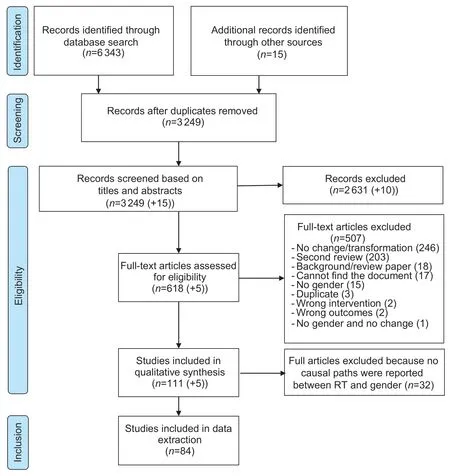
Fig.1 Preferred reporting items for systematic reviews and meta-analyses (PRISMA) diagram.
Studies were included in this review if they met the following inclusion criteria: (1) They assessed impacts of rural transformation/change on women or by gender,or they examined how gender inclusiveness or women empowerment influenced rural transformation/change; (2)the document was written in English; (3) the full text was available online.
2.3.Record extraction, screening and review
In total, there were 6 343 records (titles and abstracts)extracted based on our search terms.An additional 15 records were identifiedviaother means (i.e., additional references found manually).Three researchers were responsible for assessing which studies would be included in the review.After accounting for duplicates,3 249 titles and abstracts were independently screened by two of the three reviewers.In this initial screening phase,records were maintained if the document was written in English and its title/abstract made reference to either rural(structural) transformation (change) or to gender.Full documents were then downloaded for 618 records that were deemed relevant by at least one reviewer.These papers were first reviewed by two members of the research team.Only the criteria considered suitable by both reviews were incorporated into the study.These criteria included having access to the full text and containing an assessment of the relationship between rural (structural)transformation (change) and gender.Those judged to be suitable by one reviewer and unsuitable by the second reviewer were assessed by a third reviewer to determine whether they would be included in the study.A total of 84 studies that met the inclusion criteria were included in this systematic literature review.
2.4.Data extraction
Prior to reading each paper, a list of indicators of RT, RT impacts, gender inclusiveness indicators and outcomes was created based on an initial scan of the literature.This list was then expanded as the papers were reviewed.The gender indicators and RT outcomes of interest are listed in Table 1.Within the gender indicators, empowerment appears both as a category and a specific indicator.As an indicator, empowerment refers to increased control over household and community decision-making.For each study, relationships between these indicators and outcomes were recorded, including the sign of the effect (positive or negative) and direction of causality (whether from rural transformation to gender orvice-versa).Relationships in each paper were first recorded by one reviewer and were confirmed by a second reviewer.These relationships were recorded along with study details such as location, dates of data collection, methodology, and supporting context.The above information was entered into Nvivo for all 84 studies to code and summarize different study details and relationships.Due to limited quantitative studies related to our study, the review below focused on content analysis.
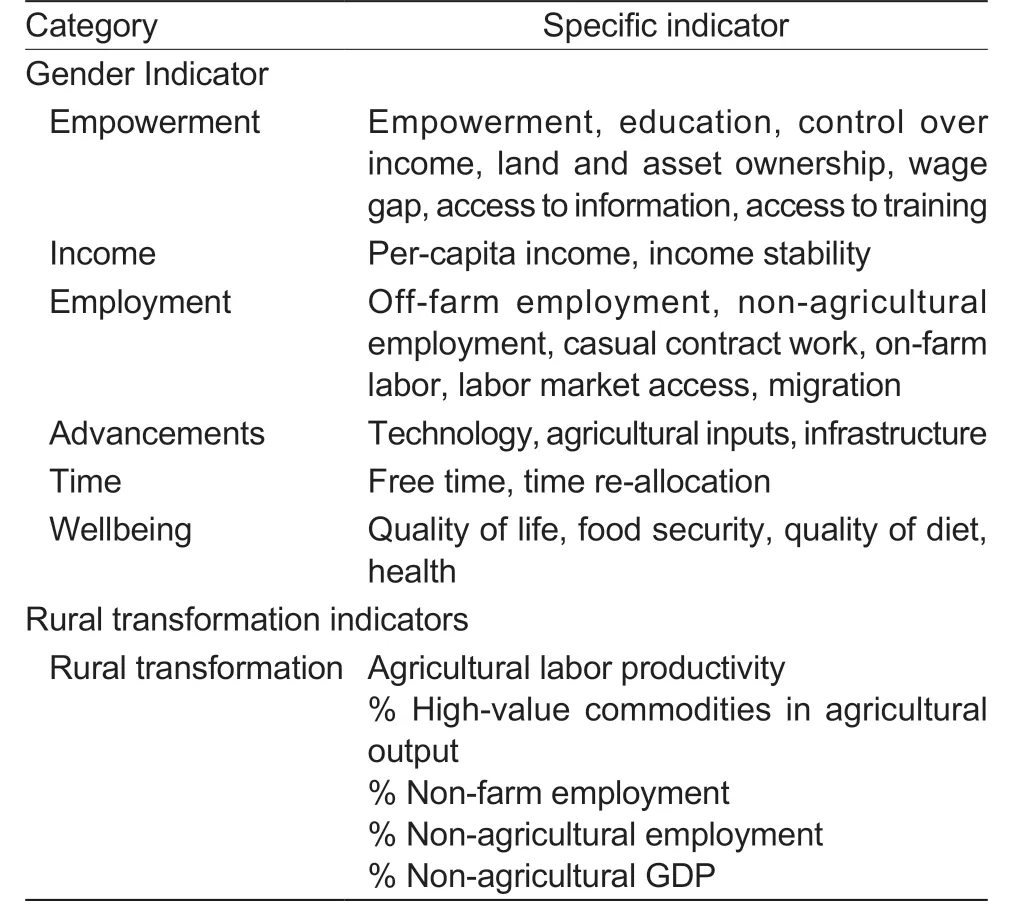
Table 1 Gender indicators and rural transformation outcomes used to identify relationship pathways in the systematic literature review
3.Results and discussion
3.1.Details of case studies included in the review
Characteristics of the relevant studies included in the systematic review are outlined in Table 2.Most of the included studies were published in academic journals,the most common beingWorldDevelopment(9 studies),JournalofRuralStudies(4 studies), and theJournalof DevelopmentStudies(3 studies), with the remaining journals accounting for 2 or fewer articles.Data collectedviasurveys and interviews was most common.Some studies employed relatively novel methods, such as using smartphone apps to track time allocation or wearable technology to measure energy expenditure, which suggests that technological advancements could be especially useful in future research on RT.
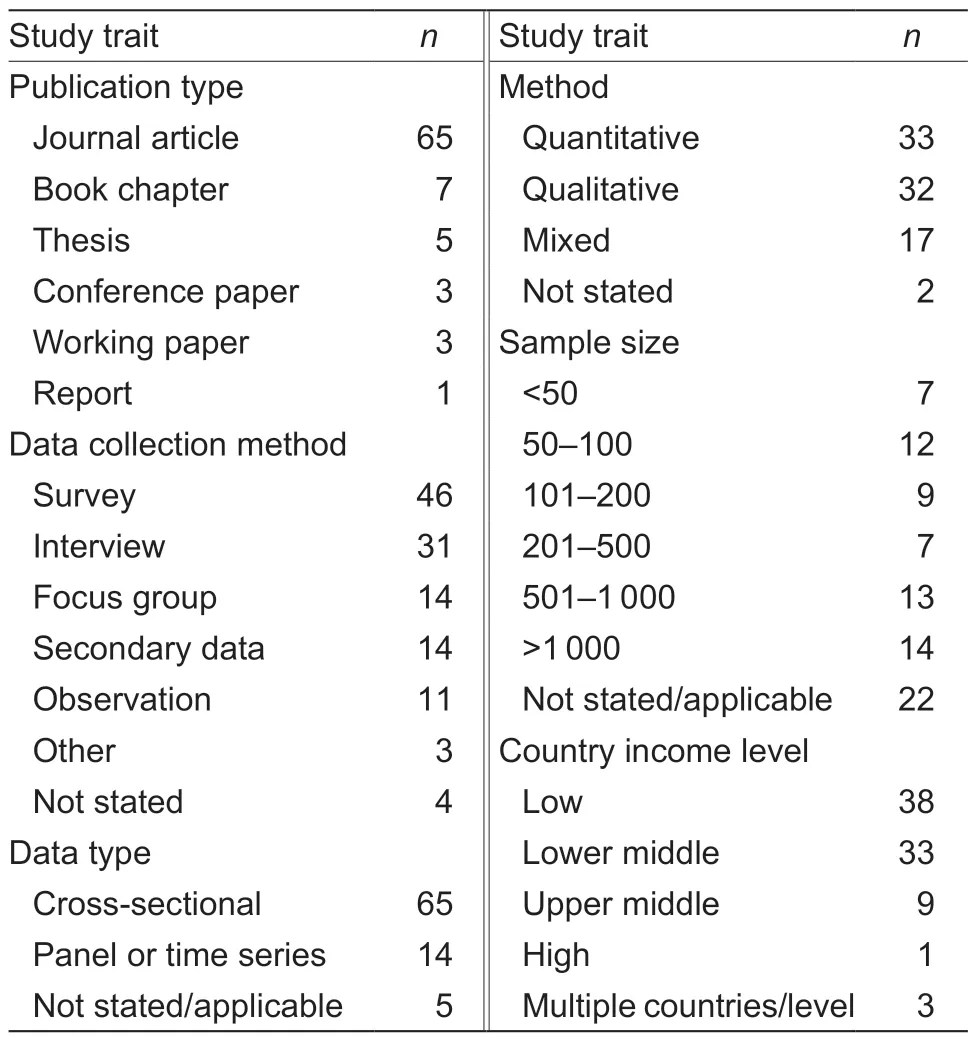
Table 2 Characteristics of studies on rural transformation and women included in the systematic review1)
Longitudinal data would be best suited to understanding the dynamic interplay between gender and RT,but only 14 studies utilized either panel or time series data.Amongst the 50 quantitative or mixed method studies, only 17 studies used regression analysis or other modelling approaches to make causal inferences,and only 8 other studies employed statistical difference tests such ast-tests.Therefore, there is still a need and opportunity for more rigorous quantitative studies investigating the dynamics of gender and RT employing longitudinal data.
Nearly all countries were classified as low- or lowermiddle-income countries by the World Bank at the time the study data were collected (World Bank 2022b).Uppermiddle income countries included those where data were collected from regions where subsistence farming was still prevalent, despite higher incomes and living standards in much of the country, such as South Africa and Malaysia.The high-income country was an autobiographical study of women farmers in Greece who described how social change and rural development impacted their lives over many decades prior to data collection (Charatsari and Papadaki-Klavdianou 2015).The geographic spread of case studies analyzed in this review is shown in Table 3.The highest number of case studies are from Asia (41)and Africa (30), with only 2 case studies coming from each of Europe, North America, and South America.
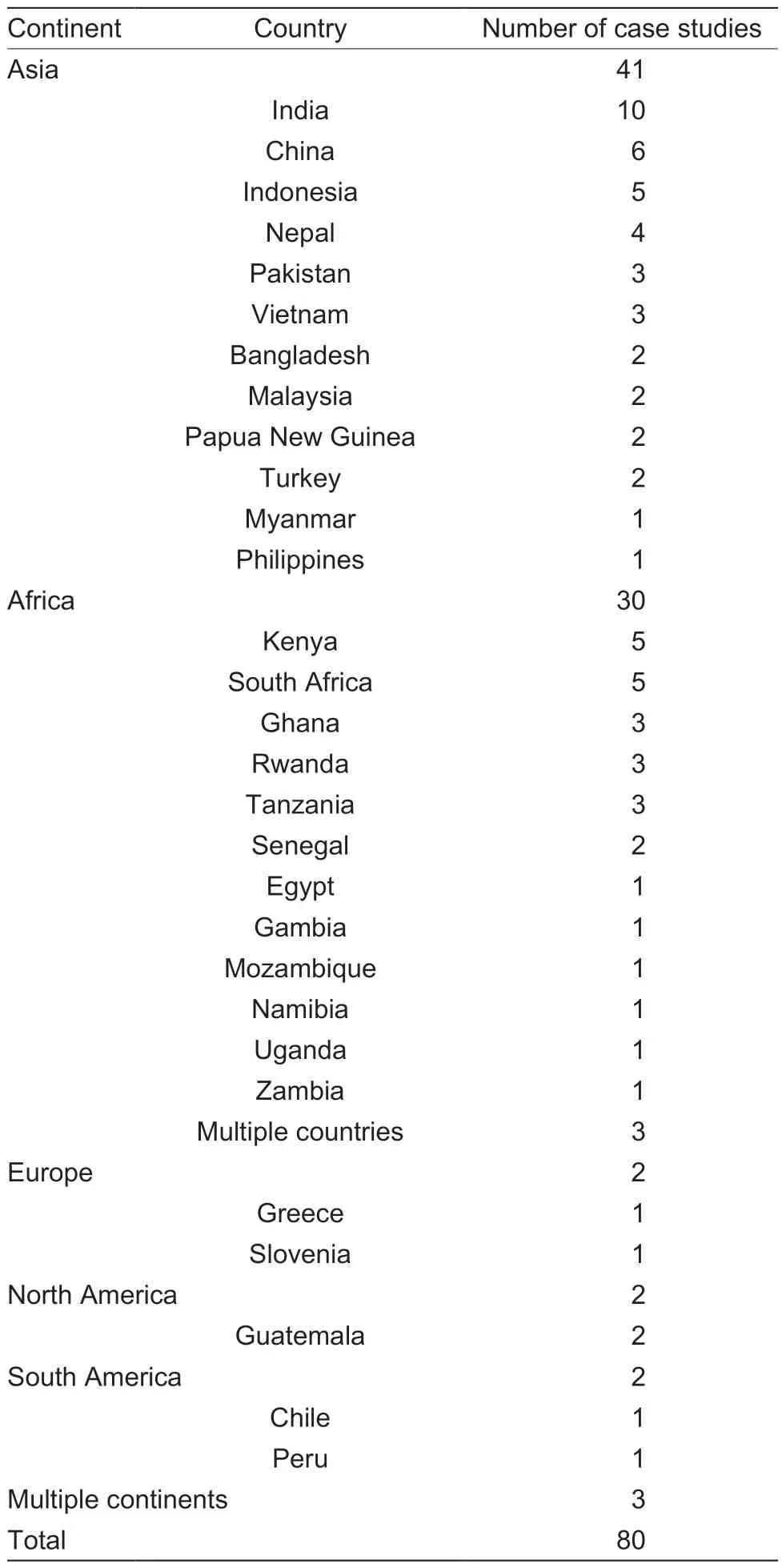
Table 3 Geographical spread of case studies included in the review
The publication year of the studies included in the systematic review is outlined in Fig.2.The topic is relatively young, with the first relevant studies being published in 1990.However, there was a significantemergence in papers examining the impacts of RT on women over the past decade, with 70% being published since 2010.Further, one-third of relevant studies were published between 2019 and 2021.
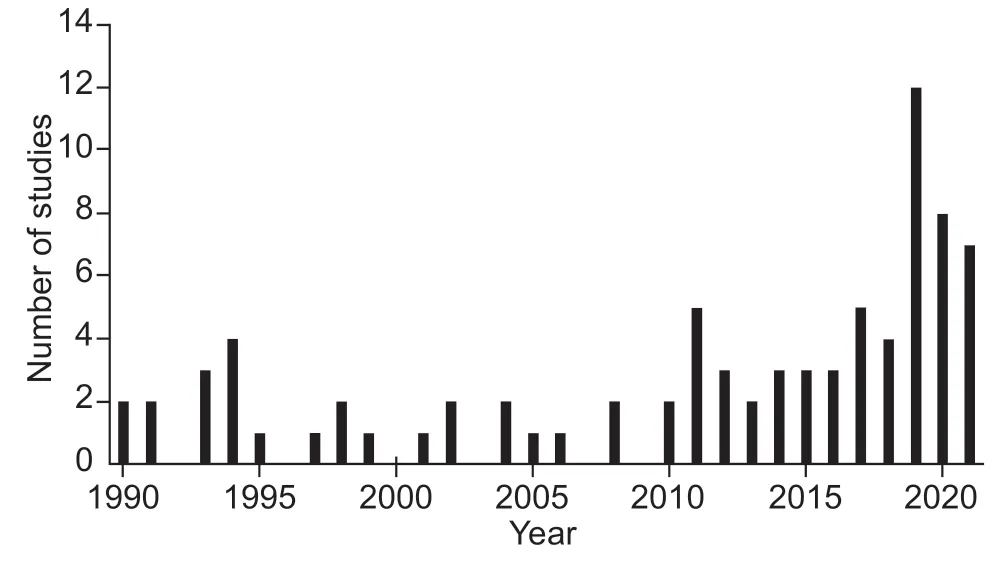
Fig.2 Publication year of the studies on rural transformation and women.
Our analysis focused on the relationships between RT and a range of gender indicators.We recorded the primary direction of the impact that each case study was based on: the impact of changes driving RT on genderdisaggregated indicators, the impact of gender policies on RT, or both.In most cases (67 studies), the framing of the analysis centered on one or more RTs that had occurred in the study area and examined the resulting gendered differentiated impacts on communities.A total of 12 studies explicitly focused on the impacts of policies and programs aimed at making changes in women’s lives and explored the broader impacts of these changes on RT indicators.Five studies explicitly focused on the two directions of changes, though others explored additional relationships, sometimes as mediating factors, as part of their analysis of RT and gender.
The RTs that were featured in the case studies generally outline aspects of regional shifts from preto post-industrial economies (Handaragamaet al.2013).With industrialization comes rising employment opportunities in construction, manufacturing, and service industries, among others (Mehrotra and Parida 2017).The case studies reviewed include investigations of women’s engagement in non-agricultural work in factory settings (Zhanget al.2014; Him and Ho?g?r 2019), rural tourism (Rodriguezet al.2011; Pudiantiet al.2020), and artisanal mining (Rutherford and Chemane-Chilemba 2020), along with non-farm work in sea snail factories (Him and Ho?g?r 2019).Another core theme driving the RT involves shifts from subsistence to commercial agriculture or higher-value commodities.In the studies we analyzed,such shifts include changing production from rice to beans(McKay 2013), from rice to oil palm, fruit, and vegetables(Sim 2011), and from rice to tea, nuts, sugarcane, and other horticultural products (Gangadharan 2008).Other examples of commercialized crops featured in our studies include cocoa (Vlassoff 1994), tobacco (Khalfan 2012; Him and Ho?g?r 2019), cardamom (Matthyset al.2021), orange (Yokoyama and Gauchan 1999), and coffee production (Bayisengeet al.2019), including with Fairtrade and UTZ private coffee designations (Meemken and Qaim 2018).RT indicators include improved productivity through the introduction of piped water systems (van Houwelinget al.2012), cereal mills (Barrett and Browne 1994), and new crop varietals such as BTcotton (Kouseret al.2017) and genetically modified maize(Gouseet al.2016).Studies varied in both the scale and time frame of the RTs investigated, but they all necessarily had to involve some form of RT, change, or intervention in the analysis.
A smaller number of studies focused on how changes in women’s lives can impact the success of RT.Where studies focused on the impacts of gender or gendered policies on RT progress, the changes driving impacts centered typically on interventions or specific policies/programs that targeted rural women.Examples of such interventions include a smallholder livestock development program in rural Bangladesh that introduced new highyielding protein breeds to poor and disadvantaged women (Alam 1997).In addition, in northern Vietnam,the Aquaculture Development in Northern Uplands project provided training to women to encourage women’s involvement in the growing aquaculture industry(Kibria and Mowla 2004).In other cases, NGOs helped establish women’s self-help groups to foster women’s entrepreneurship skills (Sati and Juyal 2008), or government programs provided women with training in managerial skills to encourage self-employment activities(Wickramasinghe 1993).In the process of reviewing all studies for consideration in our final analysis, we found that many studies have explored the impacts of such programs on women’s empowerment and wellbeing, yet few made explicit mention of how or whether positive improvements in women’s lives subsequently contributed to RT.This additional link back to RT was necessary for the case study inclusions in our analysis.
3.2.Exploring relationships between gender and RT
Across the 84 studies included in our analysis, we identify evidence of 276 relationships connecting gender and RT.Additional cases where a relationship was explored, but no significant changes or impacts were observed are summarized in Appendix A.Relationship paths are summarized in Fig.3, where the relationships identified in our systematic literature review are captured as paths connecting thematic groupings of indicators.A more detailed overview of these relationships is presented in Appendix B.In Fig.3, each category of indicators or outcomes is represented by a box with a different style or color of the line.Arrows indicating a causal effect from one set of indicators or outcomes to another share the same color and style as the originating box in the relationship.Both the direction and the number of positive and/or negative relationships flowing between indicators are reported in brackets.We report the direction and number of recorded relationships only,as very few studies explicitly mention magnitudes.In all but one case, the gender indicators reflect impacts specifically for women.The exception is migration, where both women’s and men’s out-migration are considered,as men’s migration has significant implications for women.To clearly present the impact paths from our reviewed studies, we group indicators under seven categories: RT, advancements, employment, time,income, empowerment, and wellbeing.Five of these indicators (income, employment, empowerment, time,and wellbeing) are gendered in nature.Advancements,which capture improvements in technology, inputs, or infrastructure, primarily feed into RT but impact gender indicators directly.In some cases, advancements are also impacted by gender indicators.A full list of the specific relationship paths, presented for each specific indicator, is presented in Appendix C.The presentation of the remaining results is centered in Fig.3.
3.3.The impact of RT on gender indicators
Our systematic literature review reveals that RT has a direct impact on each of the groups of gender indicators.The most commonly cited impact of RT on women is an increase in work, either through on-farm labor or off-farm or non-agricultural employment.There were 46 cases where women’s work increased and only seven where their workload decreased with RT.Women’s increased access to labor markets and employment in off-farm and non-agricultural work leads to improvement in women’s livelihoods but also flow through to other impacts, which will be presented in the sections that follow.Increased onfarm labor does not necessarily lead to positive outcomes for women.Studies in our review (e.g., Nooteboom(2019), Gangadharan (2008), Ramírez and Ruben (2015)and Kreutzmann (1993)) found that men seize new work opportunities with RT, thereby leaving women to assume primary responsibility for family labor on top of existing domestic duties, and inhibiting women’s ability to take on new work opportunities themselves.In other cases,increases in women’s casual contract work reflect gender inequities in rural areas as men take up more formal work opportunities, and women are left with less desirable contract work (Bigleret al.2017; Panda 2017).
Some studies found that RT reduced women’s workloads by reducing the amount of on-farm labor typically associated with women’s tasks.Reasons for this reduction in women’s on-farm labor include: shifts to high-value commercial crops that are less laborintensive (Matthyset al.2021); the introduction of new technologies that reduce women’s drudgery (Bullock and Tegbaru 2019); training programs helping households better divide farming activities across men and women for increased net productivity (Areguet al.2010); and women’s out-migration for overseas non-agricultural work (McKay 2013).These examples demonstrate the wide range of factors that can influence RT outcomes on women’s work.
The impact of RT on women’s income appears positive at first but is nuanced in its inclusivity.The link between RT and per-capita income is direct and intuitive: Women were increasingly engaging in different types of paid work,and women’s incomes increased as a result.However,while incomes tend to increase, shifts towards highvalue agricultural commodities contribute to reducing the stability of women’s incomes.In circumstances when women increasingly take on casual contract work, they may also face wage discrimination, a lack of benefits,and job insecurity (Francis 2002; Bigleret al.2017).In other cases, women out-migrating from rural villages for manufacturing work may find low-commitment work,where women are forced to return to their villages with fluctuations in demand and with seasonal production cycles (Eden 1991).
Our review also reveals that RT often improves women’s empowerment.The most common impact of RT on women’s empowerment was an improvement in education opportunities for girls.Indirectly, increases in per-capita income also substantially improved women’s empowerment within and outside of the household,implying a net positive effect of RT on empowerment.However, shifts to high-value agricultural commodities often decreased women’s control over income or resources within the household.This effect is explained by men assuming control over income derived from new commercial crops (Noeet al.2021), including in settings where women were responsible for the production of these commercialized agricultural outputs (Thomas-Slayter and Bhatt 1994).This reduction in empowerment was often driven by buyers signing contracts with male household heads, which excluded women from the process of marketing crops and reduced their proportion of the household income received (Glover and Kusterer 1990).There were also several cases where women engaged in new types of work but did not experience changes in their control over income, as their wages were passed on to men (Gangadharan 2008; Khalfan 2012).
While RT may have a net positive impact on wellbeing or time, through indirect income effects, it tends to have negative direct impacts on women’s free time and wellbeing.RT increased the strain on women’s time,either by increasing their domestic duties or requiring them to maintain domestic responsibilities while taking on additional work (Handaragamaet al.2013; Aiyaret al.2021).There were 6 reports of RT negatively impacting women’s wellbeing in our systematic literature review.The rise of the non-agricultural sector has been linked to poorer nutrition and increased obesity (Aiyaret al.2021), while increased commercial agriculture and natural resource industries can decrease the quality and availability of food sources for rural women and families (Sim 2011).RT may also give rise to violence against women.For example,when large camps of migrant workers were established in Malaysia for commercial forestry activities, women living nearby were more likely to be sexually assaulted (Sim 2011).Another study found that when women became the breadwinners due to shifts caused by RT, they were more likely to be victims of domestic violence by their husbands because this reality did not align with the former cultural norms (Gangadharan 2008).
In addition to the impacts of RT on gender, we can also consider the impacts of advancements, defined as improved agricultural inputs, technology, and infrastructure, on gender.The indicators within the advancements group are not gendered and typically feed into RT as contributors to increased agricultural labor productivity.Still, technology, agricultural inputs, and infrastructure improvements can have direct impacts on gender indicators.In 13 studies, advancements that reduce labor associated with women’s tasks were found to free up women’s time, allowing them to allocate more effort to work, domestic duties, political efforts, or other activities.For example, roads benefit women who are responsible for accessing markets to sell crops (Lin 1993),piped water benefits women who must collect household water (Incirlioglu 1991; Jameset al.2002; van Houwelinget al.2012), and mills benefit women who are responsible for milling grains (Barrett and Browne 1994).
Studies also reported increases in women’s income,work, and wellbeing due to technological advancements.New technologies increase agricultural labor productivity and position women to negotiate better-paid work contracts (Naylor 1994) and increase production to create more paid-off-farm work opportunities (Glover and Kusterer 1990).Furthermore, technologies can reduce women’s drudgery and allow for more leisure activities(Zantsi and Bester 2020).Advancements, therefore,contribute to our understanding of the relationships between RT and gender indicators as a supporting indicator.
3.4.The impact of women’s policies and programs on RT
Numerous studies indicated that women positively impact the process of RT by providing evidence of the influence of increased women’s employment, income,and empowerment on RT.Empowerment was found to be the most common gender indicator to contribute to broader RT, with 9 studies outlining this relationship.Empowered women were more likely to form or become involved in cooperatives (Bayisengeet al.2019), engage in local governance activities (Jameset al.2002) or create programs or systems aimed at improving women’s skills or access to new market opportunities (Bank 2010).In turn, these efforts resulted in increases in women’s creation of high-value commodities (Sati and Juyal 2008),off-farm or non-agricultural employment (Areguet al.2010), and contribution to non-agricultural GDP through crafts, cultural businesses, or tourism opportunities (Bank 2010; Pudiantiet al.2020).
There were also 3 reported positive direct relationships each for work and income on RT.As an example,increased women’s labor force participation increases productivity (Ogbeide-Osaretinet al.2019).There are also cases where women’s increased income results in increased re-investment to generate additional nonfarm income-generating activities like selling goods and services (Bank 2010).Overall, these cases, where gender indicators positively impact RT indicators, tell a story of a positive feedback loop with RT, empowerment,income, and work.This relationship is further nuanced when additional relationships amongst gender indicators are considered.
Outside of the gender indicators, technological advancements also influenced RT indicators.In particular, technological advancements (e.g., agricultural mechanization through increased use of tractors (Mehrotra and Parida 2017)) and improved agricultural inputs (e.g.,through genetically modified crop varietals (Gouseet al.2016) and Bt technology (Kouseret al.2017)) have close links to increased agricultural labor productivity.Therefore, though not in itself gendered, advancements can impact women’s lives.
3.5.Relationships between gender indicators
Understanding the nexus of relationships between RT and gender involves both direct and indirect impacts in a system of interactions amongst gender indicators.Of the 276 total relationships recorded in our review, over half (158) are impacts amongst gender indicator groups themselves, with indirect links to and from RT indicators.In this section, we present an overview of the strength of these relationships, based on reported numbers in the reviewed studies, along with details on the signs of these relationships and a brief discussion of feedback loops within the indicator groups.
Impacts of changes in work on other gender indicators,in particular to income and empowerment, were the most commonly reported direction of impact in the reviewed studies.A total of 16 positive and 2 negative cases were observed for the work-to-income pathway,reflecting the improved earning capacity of women who took on new employment opportunities.A total of 18 positive relationships and 4 negative relationships were also reported for the work-to-empowerment pathway.Improved education for girls was linked to increased family out-migration for non-agricultural work opportunities (Nooteboom 2019), as well as increased engagement in non-farm entrepreneurship by mothers(Janssenset al.2019).Still, it is important to note that while the education gap between girls and boys was found to be closing in some studies, there was still a disproportionately high number of young women leaving school early to take on domestic and reproductive roles(Heckertet al.2021).Shifting to empowerment, studies found that employment resulted in more independence for many women (Handaragamaet al.2013).Women improved their household standing to participate more in decision-making as a result of their off-farm work,though the quality of participation was still at times limited(Thiet al.2020).In some cases, women’s control over income and resources increased, either where men outmigrated (Incirlioglu 1991) or when women’s employment enabled them to contribute more to savings (Alam 1997).Other times, women’s employment had no impact on their control over resources, such as when women passed on their income to their husbands or fathers (Him and Ho?g?r 2019; Rutherford and Chemane-Chilemba 2020).In an example involving men’s out-migration,women’s empowerment impacts were mixed as women gained power within the household as they took control over managing the family farm but lost power outside the household (Vlassoff 1994).Work indicators were also reported to have a negative impact on time to a lesser extent (i.e., under four reported cases), primarily due to women’s time re-allocation in response to changes in men’s work, and a positive impact on wellbeing, with general quality of life improvements.
Income pathways to empowerment and wellbeing are also highly referenced relationships with 13 and 12 positive cases, respectively.Many of the effects of income on empowerment are similar to findings linking work to empowerment, which suggest women’s increased income influences their control over income and resources (Curryet al.2019) (including decisions to increase spending on education for girls as well as boys reported by Khamtharaet al.(2018); Matthyset al.(2021)) and contributes to their economic independence(Gallowayet al.2016).Furthermore, as women engage in new income-generating activities, they also build social networks amongst women and increase empowerment in public life (Bank 2010).The positive impacts of increased women’s income on wellbeing extend across quality of life, health, food security, and quality of diet.Increases in women’s income often lead to improvements in women’s and children’s nutrition(Kibria and Mowla 2004) and food security (Dzanku 2019) increase.However, as a sign of lasting gender inequalities, one study did note that although the quality of food increased generally within households, it increased more for boys than girls (Alam 1997).There were no additional reported pathways from income directly to time or work.
Our review found pathways with fewer (i.e., 10 or under) reports of impacts stemming from empowerment and time to other gender indicators.Increases in women’s empowerment were found to impact income, work, and wellbeing.As women’s empowerment increased through participation in community groups, women’s income also increased as the groups helped them discover prices,learn about new buyers, and engage in diversified income generation activities (Majokweni 2019).Similarly,women’s cooperative membership empowered women by providing training to learn new production techniques and increase their production of cash crops (Bayisengeet al.2019).Other training programs helped women access support programs, which then led to new incomegenerating activities in emerging industries (Bank 2010).Women also utilized networks gained in cooperative groups for better work opportunities (Noeet al.2021).Links between empowerment and wellbeing related to quality of life, health, and food security.There were few impacts reported from time to other gender indicators,but they generally related to having more time to take on off-farm and non-agricultural employment opportunities,with single records of time increasing food security and education.
Fig.3 also depicts three feedback loops observed within three gender indicators.The work feedback loop largely relates to labor interacting with other work indicators, where there is an inverse relationship between women’s labor and other work opportunities and a negative relationship between men’s migration and women’s need for on-farm labor.Our review contained several reports of men taking up better-paid employment opportunities, leaving women to pick up farm labor responsibilities.A single record of wellbeing feedback loop was also reported, in which improved quality of diet leads to improved health.Finally, the feedback loop of empowerment presents a relationship that may be of particular interest to researchers in the gender and RT space, where more empowered women have increased opportunities to further their empowerment.As an example, Jameset al.(2002) reported a case where women became more empowered through participation in women’s groups, which made them more likely to get involved in village politics and contribute to infrastructure decisions.Women ultimately contributed to decisions that led to infrastructure upgrades and repairs that freed up women’s time, which empowered them to re-allocate their time as they wished, including additional income opportunities.This is an example of an empowerment feedback loop that can be self-reinforcing and uplift women more generally.
4.Conclusion
In this systematic literature review, we identify and report on impact paths between and across gendered outcomes and indicators of RT.Across the reviewed studies, there were many cases of RT impacts on women and cases highlighting impacts between gender indicators and outcomes, but few recorded impacts of the influence of gender on RT.Overall, this review suggests that RT leads to positive outcomes for women regarding work, income,and empowerment.Furthermore, there appears to be a positive feedback loop for women, as improvements in empowerment tend to lead to future gains.Most of these outcomes stem from more empowered women contributing to society and economies to help with RT growth.We also found that RT can increase women’s incomes or work opportunities.These improvements can sometimes expose women to risk due to an increased reliance on international markets or multinational organizations or the introduction of cash crops that may be more likely to suffer from pests and disease.
By tracking the number of studies supporting each observed relationship, we obtain an indicator of the strength of these relationships and reveal gaps in our understanding of the systems driving RT and gender inclusiveness.We found little to no evidence of links between different outcomes and indicators, which may indicate that research is needed to understand the dynamics between these specific gendered elements of RT.There is also a need for future research on how improvements in women’s wellbeing impact other aspects of women’s lives and how women’s wellbeing influences RT.While the results of this systematic literature review seem to reveal that wellbeing improvements are an outcome of other changes, wellbeing improvements themselves also likely drive improvements in the other indicators, which is an important gap for future studies to address.To better understand these and other relationships between RT and gender, there is a need and opportunity for more rigorous quantitative studies that use longitudinal data.With more quantitative studies focused on causal inference and statistical testing of the two-way impacts of gender on rural transformation, we will not only be able to better capture the whole nexus of relationship paths, but may also begin to compare the magnitudes of the different effects.
Given the generally favorable impacts of gender inclusiveness on RT, future RT policies can be tailored to be more gender-inclusive both to improve women’s outcomes, and to further RT itself.While RT generally has a positive impact on communities, special care should be taken to ensure that women’s control of resources is not taken away.Furthermore, a shift in intra-household cultural norms is required to maximize the impact of RT on women’s empowerment and livelihoods.Therefore, programs that promote gender equality and gender equity in the household and the community are critical.With more intentional genderinclusive programs and policies, we expect benefits to flow to women’s and RT outcomes.
Acknowledgements
This work was supported by the Australian Centre for International Agricultural Research (ACIAR;ADP/2017/024).We would like to thank Ms Kylie Black,UWA Senior Librarian, for her assistance in the literature search during the initial stages of this systematic literature review.
Declaration of competing interest
The authors declare that they have no conflict of interest.
Appendicesassociated with this paper are available on https://doi.org/10.1016/j.jia.2023.10.035
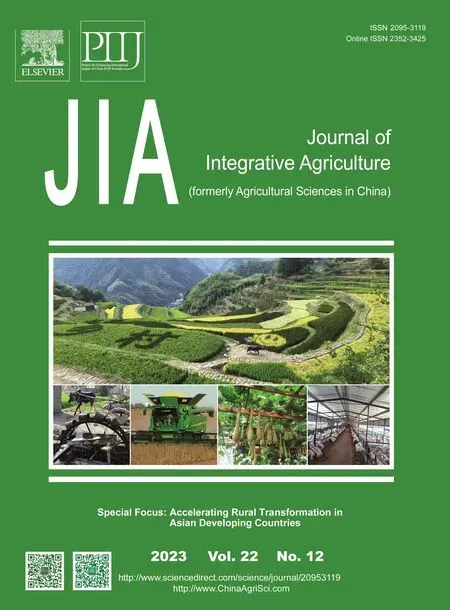 Journal of Integrative Agriculture2023年12期
Journal of Integrative Agriculture2023年12期
- Journal of Integrative Agriculture的其它文章
- Biotechnology of α-linolenic acid in oilseed rape (Brassica napus)using FAD2 and FAD3 from chia (Salvia hispanica)
- Analyzing architectural diversity in maize plants using the skeletonimage-based method
- Derivation and validation of soil total and extractable cadmium criteria for safe vegetable production
- Effects of residual plastic film on crop yield and soil fertility in a dryland farming system
- Identifying the critical phosphorus balance for optimizing phosphorus input and regulating soil phosphorus effectiveness in a typical winter wheat-summer maize rotation system in North China
- Characteristics of Mycobacterium tuberculosis serine protease Rv1043c in enzymology and pathogenicity in mice
